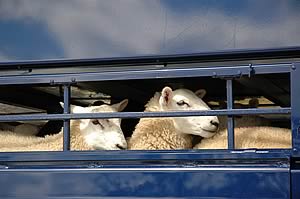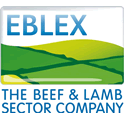| 17/02/09
A significant reduction in lamb supplies and continued export growth over the coming year bodes well for the UK sheep market providing domestic demand holds up during the recession and there is no unexpected surge in imports.
This is the cautiously optimistic forecast from EBLEX Ltd, the industry body for beef and lamb levy payers in its annual start-of-the-year outlook.
While the exceptional price levels of the past few weeks – driven by a combination of reasonable domestic demand and healthy exports – are considered unlikely to be sustainable, the market fundamentals suggest 2009 is shaping up to be a second good year in a row for lamb prices. All the more so since there is likely to be little, if any, carryover of old season lamb into the main new season market, and New Zealand exports may well be constrained by a 15% reduction in national availability.
Like the beef market, AHDB Meat Service records show GB finished lamb prices reaching a historic high in 2008 – at a deadweight average of over 296p/kg. Firmly banishing the blues of 2007, this was a good 5% ahead on the previous record year of 1996.
The encouraging prices of the past year may have caused more optimism amongst producers but underlying structural issues and the shortage of skilled labour means the national flock is predicted to decline by as much as 3% year-on-year. This is expected to more than offset any improvement in the lambing rate due to a better tupping season and lower proportion of hill ewes or increase in carcase weights from a more typical summer.
With UK ewe and ram slaughterings set to be down slightly on 2008, EBLEX forecasts total sheepmeat production to be below last year and at its lowest level since 2004. At the same time, it foresees further export growth on the back of a continued weakness of sterling against the euro. With an ongoing favourable exchange rate total exports could rise to more than 90,000 tonnes a year for the first time since the 2001 FMD disaster. This would represent nearly 29% of annual sheepmeat production compared to a historic level of around 26%.
The weakness of sterling may also help to make domestic lamb more attractive than imports, although in this respect much depends on its relative position against the New Zealand dollar. The relationship between the euro, sterling and the New Zealand dollar may also mean New Zealand lamb entering mainland Europe, resulting in a slight reduction in UK imports.
The great intangible in the market equation, of course, is the extent to which consumer demand for lamb will be affected by the recession. With opportunities for ‘trading down’ to mince and other lower value cuts seriously limited, EBLEX points out that reductions in spending power can more easily result in a switch away from lamb altogether. Balanced against this, however, is the extent to which modern lamb purchasing appears to be being driven by supermarket promotions.
The overall effect of these factors should become clearer at the annual EBLEX/BPEX Outlook Conference now rescheduled to the spring as a result of the bad winter weather.
 John Geldard is New Chairman of NSA Northern Region John Geldard is New Chairman of NSA Northern Region
 EBLEX Runs Electronic Identification of Sheep Market Trial EBLEX Runs Electronic Identification of Sheep Market Trial
 Sheep Trade Buoyed by Variety of Marketplaces Sheep Trade Buoyed by Variety of Marketplaces
|



